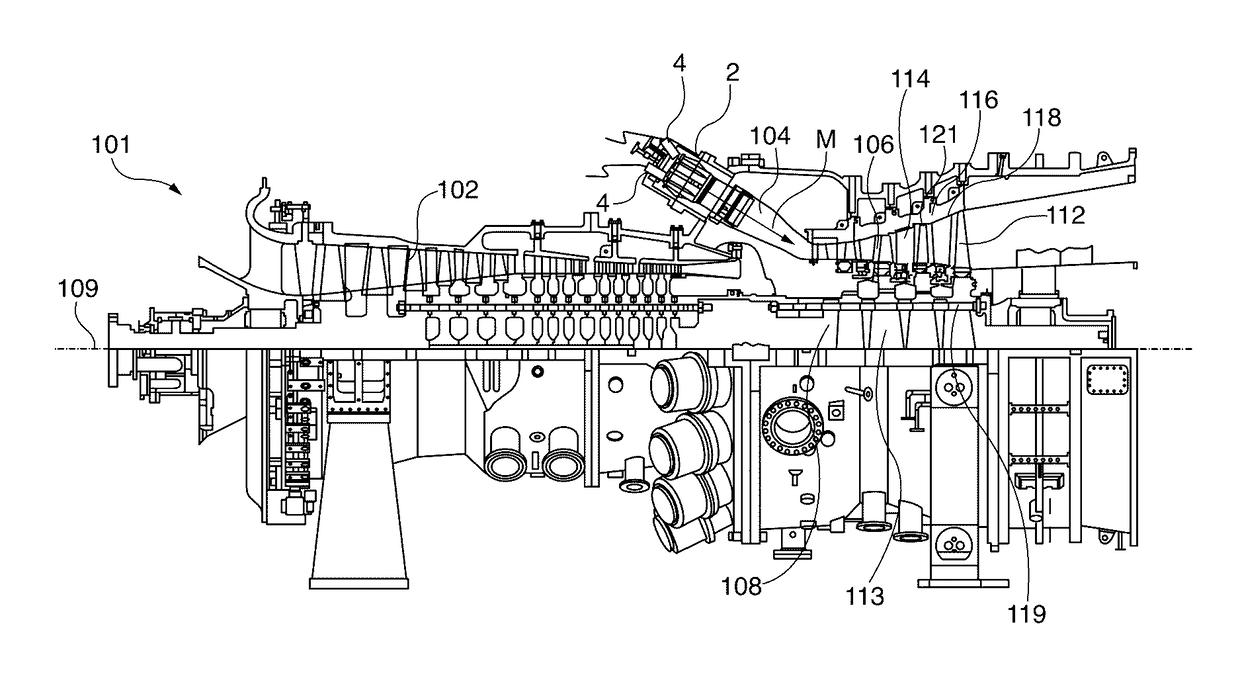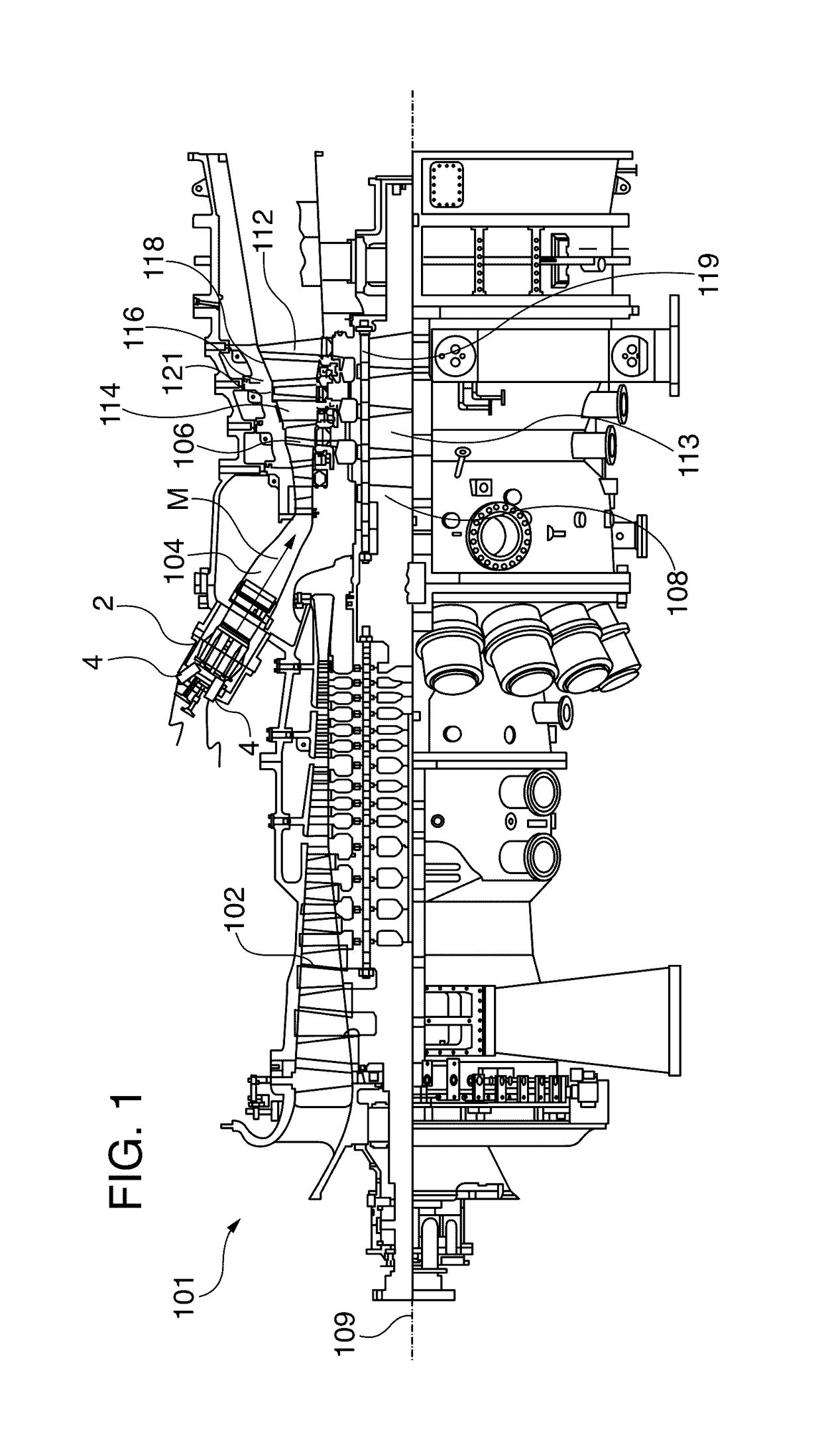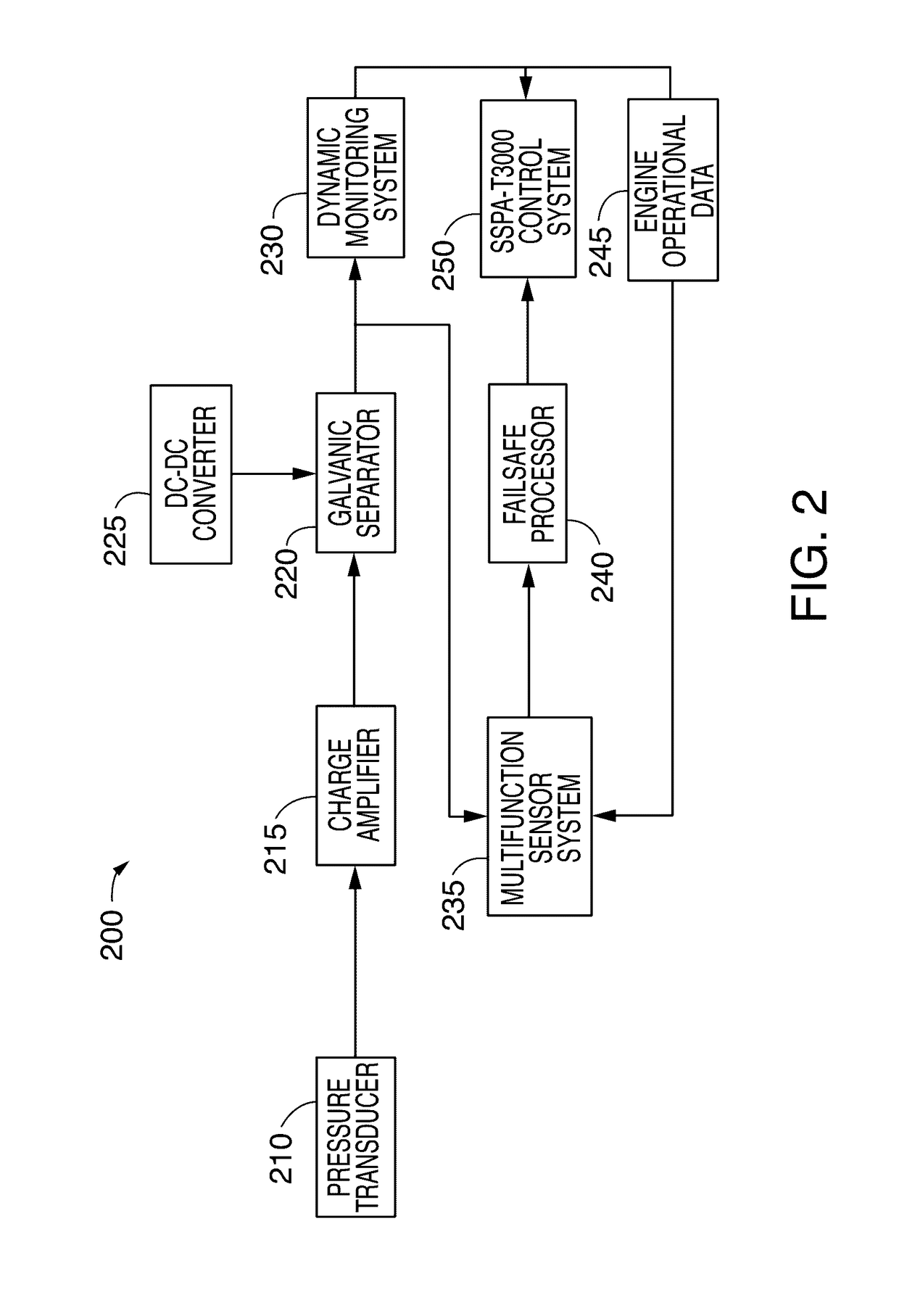Dynamic pressure method of detecting flame on/off in gas turbine combustion cans for engine protection
a technology of dynamic pressure and combustion can, which is applied in the direction of measurement devices, instruments, and testing of jet-propulsion engines, can solve the problems of reducing the flame detection capability of such systems, affecting the detection accuracy of engine protection, and affecting the safety of engine protection, so as to achieve reliable and robust detection of the flame sta
- Summary
- Abstract
- Description
- Claims
- Application Information
AI Technical Summary
Benefits of technology
Problems solved by technology
Method used
Image
Examples
Embodiment Construction
[0043]FIG. 1 shows the gas turbine 101. The lower half of FIG. 1 shows a view from above, the upper half a cross-sectional view. A gas turbine 101 is a flow machine. It has a compressor 102 for combustion air, a combustion chamber 104, as well as a turbine unit 106 for driving the compressor 102 and a generator (not shown) or a work machine. Toward that end the rotating parts of turbine unit 106 and compressor 102 are arranged on the rotor 108, to which the generator or work machine is also connected and which is rotatably mounted around its central axis 109. The combustion chamber 104 implemented in a can-annular design in the exemplary embodiment comprises a number of tube-shaped individual combustors 2 which may include baskets. Each of the combustors 2 is equipped for combusting a liquid or gaseous fuel.
[0044]The turbine unit 106 has a number of rotatable moving blades 112. The moving blades 112 are part of the rotor 108 and are arranged annularly on turbine disks 113, thus form...
PUM
| Property | Measurement | Unit |
|---|---|---|
| frequency | aaaaa | aaaaa |
| time | aaaaa | aaaaa |
| frequencies | aaaaa | aaaaa |
Abstract
Description
Claims
Application Information
 Login to View More
Login to View More - R&D
- Intellectual Property
- Life Sciences
- Materials
- Tech Scout
- Unparalleled Data Quality
- Higher Quality Content
- 60% Fewer Hallucinations
Browse by: Latest US Patents, China's latest patents, Technical Efficacy Thesaurus, Application Domain, Technology Topic, Popular Technical Reports.
© 2025 PatSnap. All rights reserved.Legal|Privacy policy|Modern Slavery Act Transparency Statement|Sitemap|About US| Contact US: help@patsnap.com



